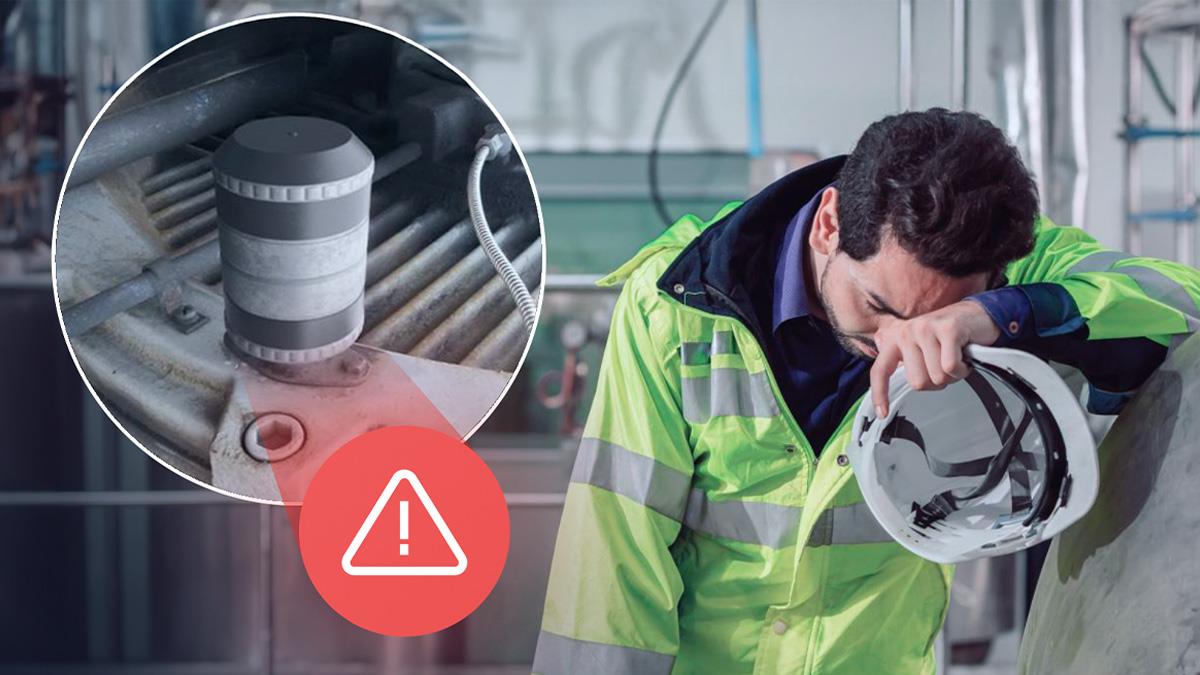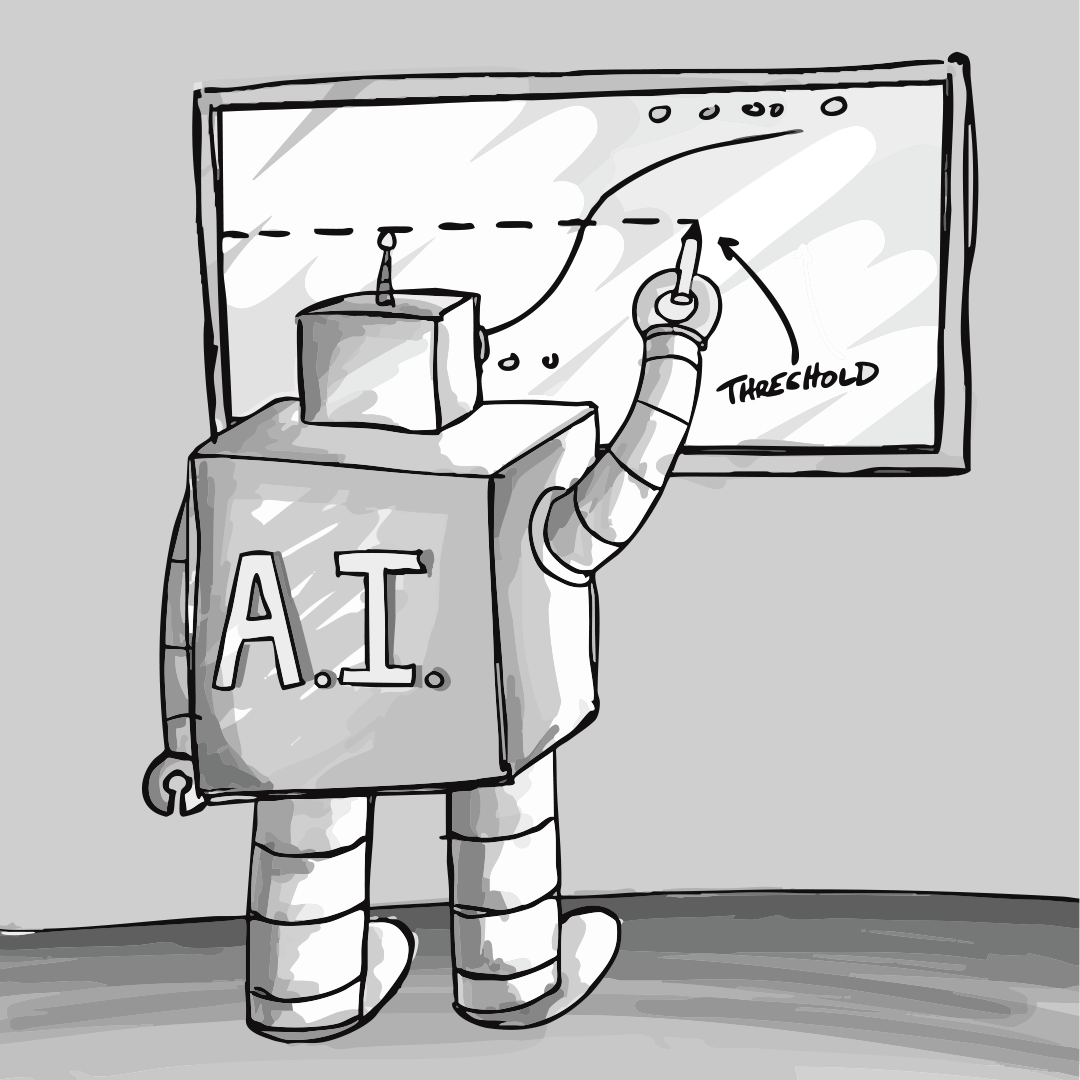
Let’s be honest—choosing the wrong condition monitoring sensor can wreck your uptime, drain your budget, and frustrate your team.
Too often, I see companies make avoidable mistakes when choosing condition monitoring solutions—and I want to help you steer clear of them.
Here are five common pitfalls we see in the field, and what to watch out for when you’re evaluating condition monitoring sensors.
#1: Not All “Predictive” Tools Are Built Equal
Just because a sensor monitors vibration or temperature doesn’t mean it’s giving you the full picture. Many so-called predictive tools are just basic samplers—they trigger alarms without telling you what’s actually wrong. That’s not predictive maintenance.
If a vendor claims to use Artificial Intelligence (AI) don’t take it at face value. Ask what their AI actually does.
In many cases, what’s branded as AI is nothing more than automatic threshold setting—just replacing a manual slider with a machine-calculated one. The underlying system still works the same: static thresholds triggering generic alarms. That’s not insight—it’s noise. And it often leads to alert fatigue and a maintenance team chasing false positives.

The right sensor doesn’t just sample data—it learns the behavior of the machine. It should capture high-resolution spectrum, adapt to different operation modes, and diagnose specific failure modes without guesswork. You want a system that goes beyond just saying “vibration has spiked” or dumping a raw spectrum for you to analyze.
Bottom line: don’t settle for sensors that stop at data. Look for solutions that connect the dots.
#2: Thinking It’s Just About the Sensors
Sure, you want sensors that are built to last—ones with a 3-year battery life even under continuous sampling, a top-notch accelerometer inside, and a reliable build that won’t flinch in tough environments. Specs matter, sure, but what else should you be looking for?
Most buyers focus heavily on hardware—because that’s what they know. But too often, software capabilities are undervalued, simply because there’s less familiarity and comfort there. Many predictive maintenance teams have gotten comfortable with the hand-held tools without realizing how much more today’s systems can do-if they are designed, deployed and used correctly.
You don’t want a digital copy of a handheld device bolted to your machine. You want a system that can do a lot more. The real game-changer is the intelligence behind it.
The best systems use AI to compare a machine’s behavior to its own history, to similar machines in your facility, and even to global benchmarks. They parse OEM data sheets, specs, maintenance records, and real-world patterns to deliver precise failure mode insights—not just generic alarms.
It’s a clear line of sight into what’s wrong, and what to do about it.
#3: Bait-and-Switch Trial Tactics
Cheap sensors often come with hidden costs—short battery life, limited durability, or expensive support contracts. An attractive trial deal that doesn’t reflect the real long-term costs. What looks like a bargain upfront can turn into a headache over time—you’re getting exactly what you paid for.
Many companies offer trials that seem beneficial, but is 30 days truly enough to assess the performance and reliability of such critical equipment? Agreeing to this would be like marrying someone you've only known for 30 days.
Instead, think in terms of total cost of ownership (TCO): hardware performance, support, updates, and the cost of missed failures. A reliable, durable system pays for itself in avoided unplanned downtime and tangible maintenance savings.
At Tractian, we believe in giving our customers the time they need to make confident decisions. That’s why we offer a validated 12-month pilot project. This extended period allows us to properly install and test our solutions in real-world conditions, ensuring they meet your operational needs and deliver tangible results.
#4: The In-House Solution
”Hey boss, we could develop our own condition monitoring system, it'll save us a ton of money!”
The idea of building an in-house condition monitoring solution can be appealing. It promises control, customization, and perceived cost savings. However, reality often falls short of these expectations.
Many companies embark on this path with high hopes, only to find themselves entangled in extended project timelines, ballooning budgets, and unforeseen technical challenges.
The primary motivation behind developing an in-house solution is cost savings. Companies believe that by leveraging internal technical expertise, they can avoid ongoing subscription fees. However, this approach frequently overlooks the steep learning curve and the complexity of developing a robust, reliable system.
What starts as a six-month project can easily stretch into a year or more, significantly exceeding initial cost and time estimates.
#5: Ignoring the People Who Use It
The best technology is useless if your team won’t—or can’t—use it. Complex dashboards, clunky apps, or vague alarms just frustrate technicians and slow down adoption. Prioritize solutions that feature intuitive interfaces, mobile access, and clear, actionable alarms.
And let’s face it — most plants today are running leaner than ever. Skilled hands are harder to find, and your team is already stretched thin. The last thing they need is another complicated system to set up that adds stress or steals time.
Sensors should lighten the load, not add to it.They should feel like a helping hand on the floor — offering clarity, not confusion — so your people can focus on what they do best. Your maintenance team should feel supported, not overwhelmed.
Because in the end, it’s more than machines. It’s about people.
Conclusion
Despite the significant advancements in AI, many companies still hesitate to embrace AI-driven solutions for their predictive maintenance needs.
Skepticism about AI's capabilities and a preference for traditional methods often lead to missed opportunities for improving operational efficiency and reducing downtime.
One common misconception is that AI is overly complex and not reliable enough for practical application in industrial settings. However, this view overlooks the transformative benefits that AI can bring to predictive maintenance.
Embrace the future of predictive maintenance but vet your vendor carefully. Only partner with vendors who cut the BS and prioritize performance, reliability, and measurable results.





